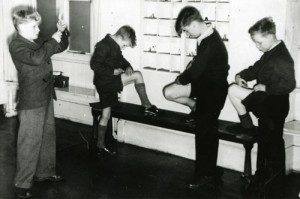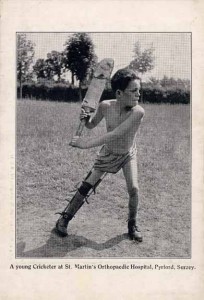Hello! For those of you not familiar with this blog, let me introduce myself. My name is Janine and I previously spent a year working on the ‘Including the Excluded’ project to catalogue the records of The Children’s Society that relate to the care of disabled children. (For blog entries about the ‘Including the Excluded’ project, please select the ‘Including the Excluded’ category on the sidebar.)
Today, I would like to introduce you to a project we are currently working on at The Children’s Society Records and Archives Centre called ‘Unexplored Riches in Medical History’. This project aims to catalogue, preserve and make available the records of The Children’s Society that shed light on all areas of medical history. It has been funded by the Wellcome Trust’s Research Resources in Medical History (RRMH) grants scheme.

The Children’s Society ran a network of children’s homes for poor and disadvantaged children from its founding in 1881 until the 1970s. The records of The Children’s Society document how the work of The Children’s Society was carried out and can help to explain what life was like for children in care during the 19th and 20th centuries.
It may not be initially obvious, but hidden amongst the records are a wealth of primary resources about medical history. One of the main concerns of The Children’s Society was to ensure that the children in its care were healthy and well, and this is reflected in the way it worked and the documents that survive.
From children’s case files that detail the health and vaccination history of individual children, to the records of children’s homes, discussing topics as varied as outbreaks of diseases and guidelines for diet, The Children’s Society’s archive contains a lot of information about medical history that has not yet been researched or explored.
The ‘Unexplored Riches in Medical History’ project aims to make this information more accessible by preserving, cataloguing and indexing part of The Children’s Society’s archive, so that in the future more people will be able to use this valuable resource.
This blog will be used to cover the project in more detail and to highlight just some of the fascinating items that are found amongst the collection.


